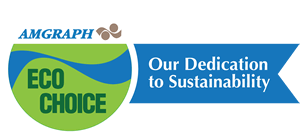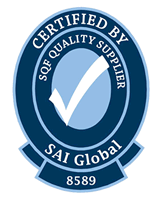In the quest to create the ideal sustainable packaging, is there a place for plastic?
We all know the downside of using plastic in packaging. It isn’t biodegradable, which contributes to pollution, and the chemicals used in the manufacture of plastic are numerous and troublesome—particularly for food packaging. So is the right answer to eliminate plastic from the packaging world entirely?
Some say no. In an article on PackagePrinting.com, Cory Francer emphasizes that plastic makers are working hard to advance sustainability while at the same time reminding people of the features that made plastic such a desirable material in previous years.
Francer points out that one of plastic’s greatest benefits is its extension of food shelf-life. While some may be quick to complain to grocery stores for wrapping their fresh fruits and vegetables in plastic, what seems like packaging waste might actually extend the life of those foods for two to three weeks. Reduction of food waste is another vital concern in the overall effort for sustainability, so extending the life of fresh food is worth considering. Providing customers with additional information about proper recycling and disposal of plastics can help alleviate the concern and make the plastic packaging a greener solution.
Nina Goodrich, in a piece published on Resource-Recycling.com, added that, even with the challenges involved in recycling and disposal of plastics, plastic production and use continues to increase. Commitments from brands to make their packaging recyclable is helping, but a lot of improvements to the infrastructure of the recycling process will be needed in order to keep up. The system, she says, is out of balance.
Flexible packaging, with its myriad applications and new technologies like MAT (microwave assisted thermal processing) and HPP (high pressure processing), will continue to drive more conversions from plastic as the challenge grows greater.
According to Goodrich, MAT processing is an alternative to traditional thermal processing. In this system, the food is put in a flexible pouch, sealed and then processed with microwaves in a water bath. Using a frequency that is much lower than that used in a household microwave, the processing eliminates microorganisms in a very short period of time, increasing the flavor and texture of the food product. It can be used to create shelf-stable foods or used to lengthen the shelf life of refrigerated foods.
HPP also requires the use of a flexible or semi-rigid package. The product is sealed inside, and the container is placed in a high-pressure vessel to decrease microorganisms. It is typically used with heat-sensitive foods like juices and smoothies, but the process has a wide range of other applications.
While embracing the different solutions available through flexible packaging, it is also important to recognize how plastics can be used for greener results. All plastics are not the same. Some are easier to recycle than others, and all plastics have a limited number of mechanical cycles.
The best move for the packaging industry would be to explore all of the technologies available and make their packaging decisions based on long-term waste reduction.
At Amgraph, we remain committed to finding the healthiest and greenest packaging solutions for all our customers—solutions that support their goals for sustainability and reduced waste throughout the supply chain.









